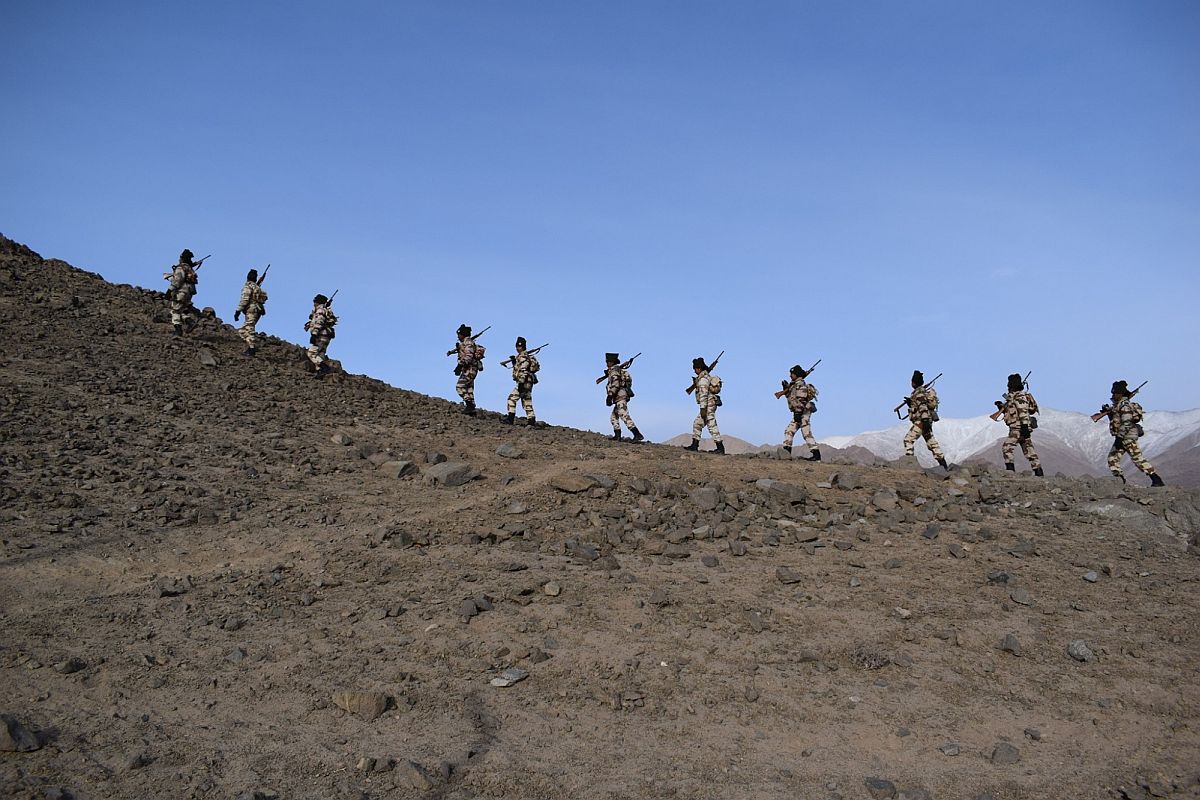The disengagement between India and China hit a roadblock in eastern Ladakh as Chinese troops have not moved back from the Line of Actual Control (LAC) in line with the consensus arrived at during the military-level talks between both the countries.
Seeing this, the Indian Army is preparing for a long haul and harsh winter in the high-altitude region.
A massive logistical exercise has started to provide adequate rations and other supplies to its soldiers as the friction areas still remain volatile.
China is reportedly not complying with the roadmap for a complete pullback, which was drawn out during the Corps Commander-level meet on July 14. The Chinese People’s Liberation Army troops have not moved back.
The Indian security establishments said that the Chinese retreated a bit and then returned and therefore, there is a need for “constant verification” of the consensus achieved during the meetings between the Indian and Chinese military delegates.
It has been found that the Indian and Chinese troops have pulled back at Pangong Lake by 2 km and Finger 4 is empty. However, the Chinese are still camping on the ridge line. This clearly indicates that the Chinese had camped at Finger 4 that had traditionally been under the Indian control.
The Chinese had come 8 km into the Indian territory, all the way till Finger 4 from Finger 8. India maintains that the LAC runs through Finger 8. Mountain spurs jutting into the lake are referred to as fingers.
In Galwan Valley, which is called Patrolling Point 14, distance between Indian and Chinese troops is 3 km. At Patrolling Point 15, the distance between troops is around 8 km.
But in Hot Springs, that is Patrolling Point 17, 40-50 troops on both sides are just 600-800 meters apart. The Chinese Army had retreated as per the consensus, but again returned.
In the wake of the Chinese approach, Defence Minister Rajnath Singh while reviewing the Indian Air Force’s operational capabilities and deployments at forward locations on Wednesday urged the force to stand ready to handle any eventuality on the border with China.
Singh had said during his address at the inaugural session of the three-day Air Force Commanders’ Conference in New Delhi that started on Wednesday.
Rajnath Singh, during his visit to Ladakh on July 17, had said that talks between India and China on border dispute are underway but added that the extent of the success, however, “cannot be guaranteed”.
He, however, assured that “not an inch of our land can be taken by any power in the world” as he interacted with the Indian Army and ITBP personnel at Lukung in Ladakh.
“Talks are underway to resolve the border dispute but to what extent it can be resolved I cannot guarantee. I can assure you, not an inch of our land can be taken by any power in the world,” Singh said and added, “If solution can be found by talks, there is nothing better”.
Currently, both India and China are engaged in military and diplomatic deliberation to de-escalate the tense situation at the border areas. The countries are locked in a standoff that is over 10-week old, at multiple points, hitherto unprecedented along the border.
On July 14, in a marathon meeting that lasted for almost 15 hours, the military delegates of India and China held deliberations on disengagement and de-escalation of troops and materials on their borders in eastern Ladakh along the Line of Actual Control (LAC).
This was the fourth Corps Commander-level meeting between 14 Corps Commander Lieutenant General Harinder Singh and South Xinjiang Military District chief Major General Liu Lin, that took place on the lines of the one held at the Chushul-Moldo border personnel meeting (BPM) point in eastern Ladakh on June 6.
During the talks, the Indian side asked PLA troops to completely withdraw from Pangong Lake and Depsang area. Before the parleys started, India’s main aim was to get the Chinese People’s Liberation Army remove its tanks, artillery and additional forces at Pangong Lake and Depsang areas.
The disengagement process between the two armies in the Galwan valley began on July 6 after a two-month military standoff.
The mutual agreement on disengagement came after a key phone call between Chinese Foreign Minister, State Councillor and Special Representative on the Sino-Indian Boundary Issue Wang Yi and Indian National Security Advisor and Special Representative Ajit Doval on July 5.
Both the countries noted that it was necessary to ensure at the earliest complete disengagement of the troops along the LAC and de-escalation from India-China border areas for full restoration of peace and tranquillity and also agreed that the two sides should not allow differences to become disputes.
The two sides also agreed to ensure a phased and stepwise de-escalation in the India-China border areas.
They re-affirmed that both sides should strictly respect and observe the LAC and should not take any unilateral action to alter the status quo and work together to avoid any incident in the future that could disturb peace and tranquillity in border areas.










